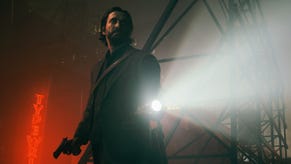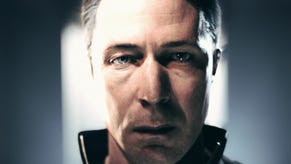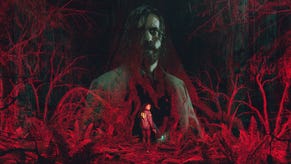Alan Wake
Light-motif.
For all its cinematic and televisual influences - Hitchcock, Lost, Twin Peaks, The X-Files - Alan Wake isn't just another action game that wishes it were on the big screen. Light, its thematic motif, is woven inextricably into the gameplay itself; as well as a stylistic visual technique, it's a combat device, your means of progression, your guide through wide-open environments. Alan Wake tells its story like only a videogame can, deftly fashioning its narrative themes of light and darkness and subjective and objective reality into essential gameplay elements. Instead of feeling like the actual game is just getting in the way of the story, as is so often the case with such plot- and character-orientated videogames, Alan Wake's integration of an emotionally-engaging thriller narrative into a third-person action template feels entirely natural.
It's clearly not a happy accident that Alan Wake looks and feels so polished. It's been in development a long time now, and finding the correct balance of explorative gameplay and the linear structure necessary for effective storytelling has been a matter of trial and error. "The game is still built on openworld technology, but we consider ourselves storytellers, and in order to deliver that well it has to be a more linear experience," explains Remedy's ever-charismatic MD, Matias Myllyrinne. "We don't want the player to feel like they're being pulled by a string all the time - we want them to feel like he's making his own decisions and choices, even though we're delivering the story in a certain way."

In short, then, Alan Wake drops you into tightly-scripted cinematic set-pieces, but it lets you determine your own way of making your way through them. You can see a lone, abandoned farmhouse in the distance with the light left on, and figure out how to get there yourself - it doesn't force you along an arbitrary path between lovingly-rendered cut-scenes. The game's environments are miles wide, encouraging you to dig further into the fiction and really explore Bright Falls rather than follow a set path.
Your guide in Wake's world is light, whether from a distant building or handheld flashlight. At E3 we saw Wake using generators, flares and his trusty torch to forge a safe path through the darkness and attack possessed villagers in the mountainside town of Bright Falls, and saw how the mysterious dark presence that's overtaken the town's inhabitants is also capable of possessing a digger truck and cutting swathes through the forest like a hellish tornado for cinematic effect. In a state of panic or fear, Wake can will his torch to burn brighter, which ties into the game's underlying theme of subjective reality - pulling the left trigger intensifies the light, which drains the battery but keeps you safe until you can make it to a generator or the sun begins to creep over the horizon. The flashlight is more important than a gun in Alan Wake, more effective protection from the powers of darkness.









